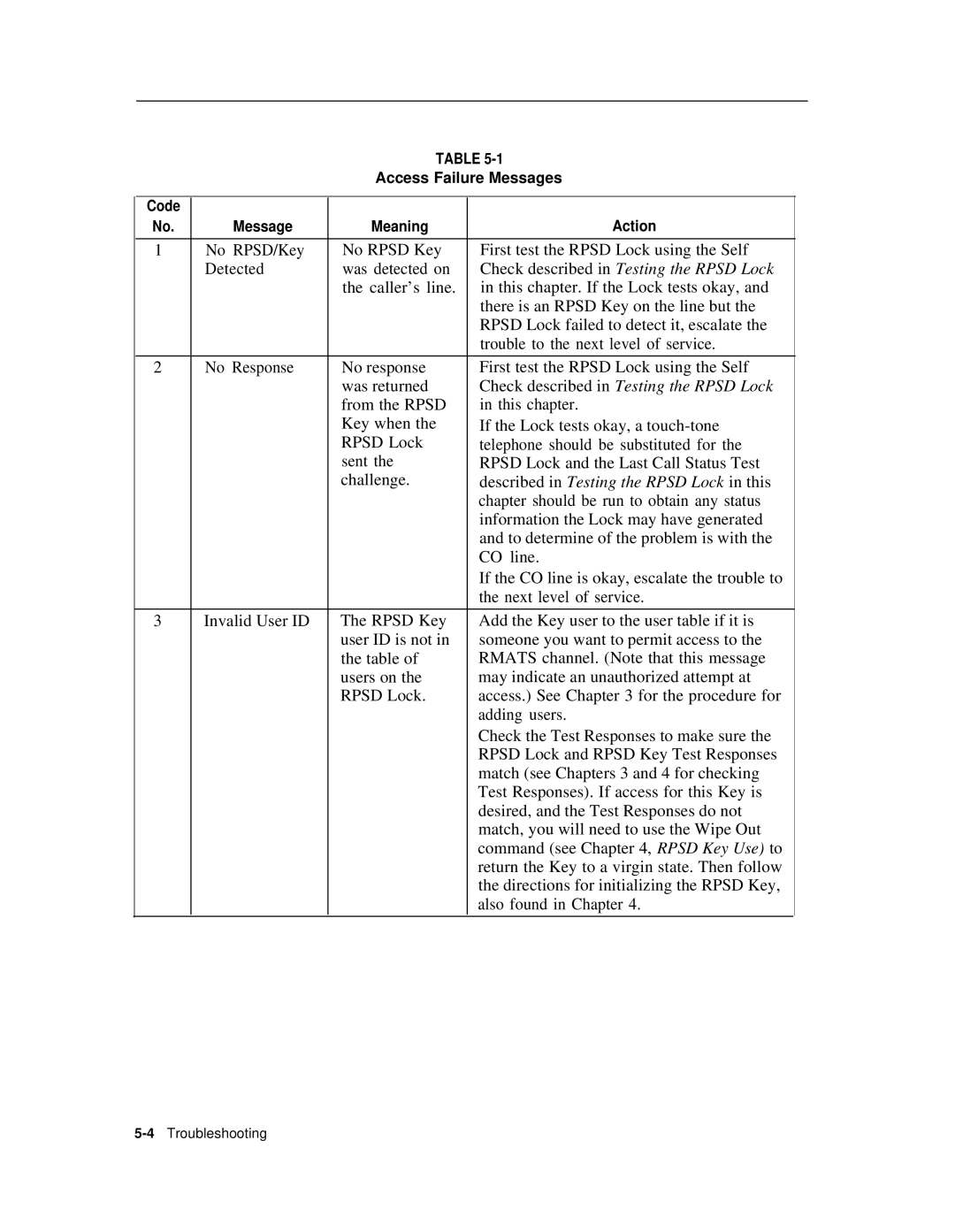TABLE
Access Failure Messages
Code |
|
|
|
No. | Message | Meaning | Action |
|
|
|
|
1 | No RPSD/Key | No RPSD Key | First test the RPSD Lock using the Self |
| Detected | was detected on | Check described in Testing the RPSD Lock |
|
| the caller’s line. | in this chapter. If the Lock tests okay, and |
|
|
| there is an RPSD Key on the line but the |
|
|
| RPSD Lock failed to detect it, escalate the |
|
|
| trouble to the next level of service. |
|
|
|
|
2 | No Response | No response | First test the RPSD Lock using the Self |
|
| was returned | Check described in Testing the RPSD Lock |
|
| from the RPSD | in this chapter. |
|
| Key when the | If the Lock tests okay, a |
|
| RPSD Lock | telephone should be substituted for the |
|
| sent the | RPSD Lock and the Last Call Status Test |
|
| challenge. | described in Testing the RPSD Lock in this |
|
|
| chapter should be run to obtain any status |
|
|
| information the Lock may have generated |
|
|
| and to determine of the problem is with the |
|
|
| CO line. |
|
|
| If the CO line is okay, escalate the trouble to |
|
|
| the next level of service. |
|
|
|
|
3 | Invalid User ID | The RPSD Key | Add the Key user to the user table if it is |
|
| user ID is not in | someone you want to permit access to the |
|
| the table of | RMATS channel. (Note that this message |
|
| users on the | may indicate an unauthorized attempt at |
|
| RPSD Lock. | access.) See Chapter 3 for the procedure for |
|
|
| adding users. |
|
|
| Check the Test Responses to make sure the |
|
|
| RPSD Lock and RPSD Key Test Responses |
|
|
| match (see Chapters 3 and 4 for checking |
|
|
| Test Responses). If access for this Key is |
|
|
| desired, and the Test Responses do not |
|
|
| match, you will need to use the Wipe Out |
|
|
| command (see Chapter 4, RPSD Key Use) to |
|
|
| return the Key to a virgin state. Then follow |
|
|
| the directions for initializing the RPSD Key, |
|
|
| also found in Chapter 4. |
